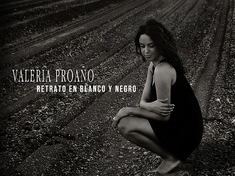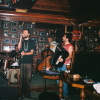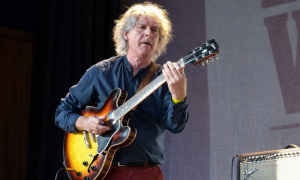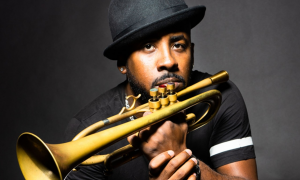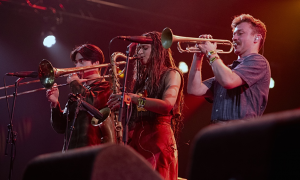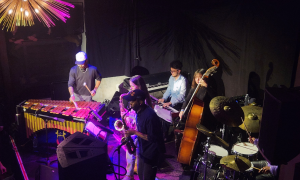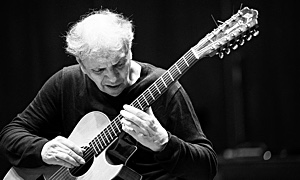Home » Jazz Articles » Live Review » Jazzkaar 2011: Tallinn, Estonia, Days 7-8
Jazzkaar 2011: Tallinn, Estonia, Days 7-8
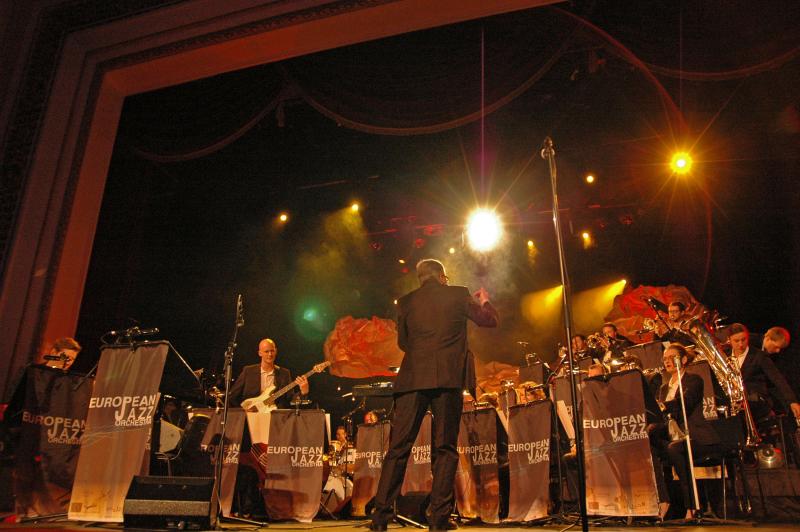
Dave Liebman Quintet / European Jazz Orchestra
Jazzkaar Festival 2011
Tallinn, Estonia
April 26-27, 2011
As Jazzkaar 2011 heads into the home stretch, it's important to remember that, with Tallinn selected as European Capital of Culture for 2011, there's a whole lot more to come, with a wide range of activities taking place all the way up to year's end.
One of the more intriguing projects has been instigated by Tallinn 2011's Madli-Liis Parts, a longtime friend and advocate of the Norwegian scene, and the woman responsible for bringing Punkt to Jazzkaar, at the start of this year's edition. Her relationship with many of the Scandinavian country's leading musicians, in particular trumpeter Arve Henriksen and percussionist Terje Isungset, has led to a project that, when it is finally presented in Tallinn on December 20 and 21, 2011, is sure to go down as one of Tallinn 2011's more memorable musical projects.
Isungset has been involved in working with ice as the basis for fashioning musical instruments for many years, releasing some half a dozen Ice Music albums that feature everything from ice percussion to ice harps, ice trumpets, ice gongs and more. He runs an Ice Festival in the north of Norway, at the time of the first new moon of the year, but has been bringing this unique concept to countries around the world for some time. The idea of constructing instruments out of ice, over the course of two-three days, performing on the instruments, and then letting them melt back into the ground, may seem like the ideal eco-friendly music; but this is far more than shtick or concept du jour. Isungset, collaborating with other Norwegians including singer Sidsel Endresen and Henriksen, has created a unique body of work—largely improvised—that has now been taken as the basis for another equally innovative idea: Glass Music.
Isungset and Henriksen—who are working with a group of Estonian glass artists and students, to create a myriad of instruments to be used at the Tallinn 2011 closing concerts—were in Tallinn for a couple of days during Jazzkaar, to check out some of the instruments that have been created, to determine their potential, make suggestions for fine tuning, and start documenting what each instrument can do, and how it might be used.
The instruments are being built by artists including Mare Saare, who is making a special glass horn for Isungset; Eeva Käsper, who is the project manager for the glass art portion of the project and, along with Saare, has been working with glass art students (the project is part of the curriculum for those studying at the Estonian Art Academy) to come up with a variety of potential instruments; and Tiina Sarapu, who is preparing the stage design for the concerts, as well as fashioning some additional instruments. There were a number of horn-like instruments, and even a variety of glass mouthpieces, that make things a little easier than, for example, the ice trumpets that Henriksen has used with Isungset in the past—since the ice trumpets used ice mouthpieces, and every time Henriksen blew into one, the mouthpiece would begin to melt, it became necessary to use a number of them, so that the trumpeter could use one for a short bit, and move on to a second, to allow the first instrument's mouthpiece time to freeze back up again.
The permanence of glass means that, when all is said and done, Isungset and Henriksen will have a potential arsenal of musical instruments with absolutely distinctive sonic characteristics, that they can continue to use well into the future: what looked like—and, in fact, were—a series of bottles cut and then attached together to create a long tube sounded like an otherworldly didgeridoo; different sized glass bars rested on top of a flat glass panel to create a glass marimba; glass plates with crossbars attached to them so that they could be struck without being muted by a human hand—and, while the resonating sound they made, sometimes lasting upwards of 20-25 seconds, was very quiet, putting a microphone near them and amplifying them made the sound absolutely huge.
In an exclusive demonstration for All About Jazz, a Moscow journalist and a colleague from the Norwegian Jazznytt magazine, Henriksen and Isungset gave a walkthrough of some of the instruments, demonstrating their various possibilities and describing the process of creating and refining the instruments. Glass horns—some sounding similar to Japanese flutes, others more like a ram's horn—were delivered by the artists, but Henriksen has gone further, drawing small markings on some of the horns, so that holes can now be drilled, and the instruments can be played with fingers as well as through embouchure. Racks of hanging glass—some as deep as the largest gong, others as delicate is the softest wind chime—were being fine-tuned, with Henriksen and Isungset acting like kids in a candy store, albeit focused ones with an underlying sense of purpose. Creating these instruments is, after all, clearly a lot of fun for two musicians who, as longtime improvisers (but with serious roots in music from various traditions, but especially their own) see opportunity everywhere, and view problems as nothing more than matters to be solved.
Even broken instruments—and some do break, proving too delicate to be handled—get used, as the shards are thrown into a box and Isungset crunches them with a glass stick ("Vic Firth stick number 35," Henriksen joked). "A glass high hat?" Isungset suggested. And while it's uncertain yet whether or not the duo will use technology in the performance—with Henriksen, there's always the possibility of processing, looping and more—one thing is certain: lighting will be a big part of it, given the wondrous opportunities that glass of various shapes, thicknesses and texture can provide, when light reflects and/or refracts through it. A particularly intriguing instrument looked like a standing rectangle of glass, but with a deep groove running near one edge, so that when Isungset struck the thin bar with his finger, a gorgeous, deep resonant sound was created.
Henriksen played some recordings they'd made the previous day, and while Isungset demonstrated some of the instruments, amplifying them with a microphone, Henriksen sampled them, and processed them, to demonstrate even greater possibilities, should the duo decide to bring technology into the picture.
Putting on the show will represent no small challenge in logistics: staging and lighting, to be determined, as does, given the delicacy and quiet resonance of some instruments, the louder nature of others, figuring out how to broadcast the sounds out to an audience, and creating a workable stage volume, where both artists can hear everything. It will clearly take time to suss out. But, in the meantime, work continues on refining the array of instruments, cataloguing what each one can do. The duo has also spent time at the venue, to begin considering exactly how to lay the room out. The venue they will be using—not a conventional theater-style room—will allow them to shape the presentation completely, including the use of a surround sound system, so that the audience will be enveloped in the sound, rather than having it pushed out to them in the normal stage/audience configuration.
It sounds like they've a lot of work to do, but based on what they already have, and their track records in finding ways to make music in any context, and with anything that can generate sound, whether it's tuned or not, this demonstration was a revealing window into what will certainly be one of Tallinn 2011's most memorable projects.
April 26: Dave Liebman Quintet
In the meantime, while Henriksen and Isungset were working on their unorthodox instruments, American saxophonist Dave Liebman—dubbed "Jazz Ambassador" by the festival—was doing a little outreach of his own. The saxophonist was brought to Estonia to conduct, amongst other things, a three-day workshop at the city's music conservatory, as well as put on a performance at Tallinn's Vene Kultuurikeskus, an opulent theatre seating nearly one thousand people. Liebman's quintet was put together by guitarist Jak Sooäär, a mover and shaker on the Estonian scene who is more often heard in rock-edged free improvisations, including his latest release, Karate (Leo, 2011), where the guitarist's trio is augmented by Russian saxophonist Alexey Kruglov.
For this performance—and the following evening's repeat at the Kontsertimaja in Jõhvi, about 100 miles from Tallinn—Sooäär recruited Krisjan Randalu, an Estonian pianist already making an international name for himself, recently described, by New York-based, Italian expat saxophonist Matteo Sabattini, as "the only pianist I know who can play my charts." Randalu studied in New York at the Manhattan School of Music, and was this year's recipient of the Estonian Elion Jazz Talent Award, presented prior to the Liebman group hitting the stage, along with 21 year-old pianist Joel Remmel, who was deservingly awarded the Young Jazz Talent Award.
Sooäär also enlisted his own trio's drummer, Tanel Ruben, as well as bassist Mihkel Mälgand, and selected all the material for the 90-minute show from across Liebman's vast repertoire, going as far back as "Loft Dance," from Drum Ode (ECM, 1975), to more recent material, like the title track to Negative Space (Verve, 2008) and "Fuschia," from the saxophonist's recent duet record with pianist Jean-Marie Machado, Eternal Moments (Bee Jazz, 2010).
As would be expected from Liebman, it was a smoking set and, while it would be impossible for this group—put together on the relative quick—to approach the kind of empathic work of the saxophonist's longstanding quartet with guitarist Vic Juris, bassist Tony Marino and drummer Marko Marcinko, there were plenty of strong moments from the group, in particular Randalu, whose ability to think out of the box made him a tremendous accompanist and even more compelling soloist, especially on the fiery "Loft Dance." Sooäär clearly has plenty of chops, but his performance was marred slightly by his tone—overdriven but, at times, a tad thin. He demonstrated no shortage of ability to navigate changes and build solos with dramatic peaks, but could stand to learn a lesson from Liebman about the value of space: the saxophonist has long possessed a reputation for fierce expressionism, but even when the temperature was at the boiling point, and the entire group was kicking hard, he never failed to let his playing breathe, making sure that melody always had a place.
Liebman introduced most tunes, providing insight for an Estonian audience not, perhaps, familiar with the New York scene of the late 1960s and early 1970s, in particular the loft scene from which "Loft Dance" got its name, where Liebman and a wealth of other up-and-comers like Bob Berg, Michael Brecker and Steve Grossman cut their teeth. He introduced the set-closer, an incendiary version of John Coltrane's classic "India," as being written ..."before The Beatles went to India, and before 'world music,' back when we were just 'interested,'" he quipped. Starting on wooden flute, with Randalu strumming, harp-like, inside the box, the song really took off when Mälgan and Ruben came in alongside Sooäär's pumping power chord rework of the song's fourths-driven changes. It was a powerful ending to a set that was enthusiastically received by the capacity crowd, who cheered even louder when the group returned for an encore that was based on a traditional Estonian folk tune.
April 27: European Jazz Orchestra
The following evening—and at the same venue—continued the theme of providing an even younger group of musicians the opportunity to hone their craft, as the European Jazz Orchestra took to the stage for two sets of compelling and contemporary big band music, written by its Finnish conductor, Jere Laukkanen, and Estonia's own Raul Sööt. The EJO is an annual project, funded by a number of countries, where musicians from across the continent are brought together for some intensive rehearsal, culminating in a 15-date tour, with the final two stops in the two cities designated as European Capital of Culture for 2011: Tallinn, of course; and Turku, Finland.
The 17-piece orchestra featured musicians from Germany, Switzerland, Slovakia, Austria, The Netherlands, Czech Republic, Scotland, Sweden, Slovenia, France, Denmark, Norway, Estonia, Bulgaria, Croatia, Finland...and one non-European, Canadian trumpeter Simon Millerd. Amongst the many new names—names which, based on their performances in Tallinn, deserve to become better-known, and soon—were a few familiar faces. Pianist Pablo Held, from Germany, already has three release as a leader on Pirouet, including the recently-released Glow (2011), while British-born/Norwegian-based trumpeter Hayden Powell is a member of Magic Pocket, who delivered a terrific performance with the Trondheim Jazz Orchestra at the 2010Molde Jazz Festival. But the biggest applause, from this Estonian audience, was reserved for bassist Peedu Kass, winner of the 2010 Elion Young Jazz Talent Award. The bassist's opening solo at near the end of the second set, on "The Icebreaker's Son," was a folk-tinged combination of near-strummed pizzicato and soaring arco that proved Kass was as strong a contender on double-bass as he was, elsewhere in the set, on electric.
The material covered a lot of ground stylistically, and gave everyone in the group at least one chance in the spotlight, with the soloists coming, for the most part, to a microphone at the front of the stage. But the best fun was saved for the encore, a song that moved between funk and a faster groove, where groups of players came to the front for some heated trade-offs. One of the best was from trombonists Vid Žgajner (Slovenia) and Patrick Kenny (Britain), embodying a perfect combination of friendly competition and clear appreciation/respect. In fact, there was a lot of friendly banter—musical and otherwise—going on throughout the entire show, making it clear that participation in EJO was a bonding experience for the young players. It will come as no surprise, as these players' careers kick into higher gear, to find some of them collaborating outside EJO in future.
With three more days left in Jazzkaar 2011, it was sadly time to move on—next stop: Bremen, Germany, for Jazzahead, a jazz trade show featuring artists and industry folks from across the continent, and two intense days of networking and showcases. But it couldn't have been a better year to pick for a first visit to Estonia: between the programming of Jazzkaar—where the emphasis was heavily on the music of its own artists, even though the final stretch would feature bigger names like Bobby McFerrin and Richard Bona—and a sampling of some of the other programming scheduled for the rest of the year, it's clear that Tallinn 2011 may be inherently smaller than some of the larger Capitals of Culture of previous years, but that has, in no way, dwarfed the creative spirit and imaginative thinking that comes from a culture centuries old, but being interpreted and presented in an absolutely 21st century fashion.
Photo Credit: John Kelman
Tags
tallinn 2011
Jazzkaar
Live Reviews
John Kelman
Estonia
Arve Henriksen
Terje Isungset
Sidsel Endresen
Dave Liebman
Matteo Sabattini
Jean-Marie Machado
Vic Juris
Tony Marino
Marko Marcinko
Bob Berg
Michael Brecker
Steve Grossman
John Coltrane
The Beatles
Pablo Held
Bobby McFerrin
Richard Bona
PREVIOUS / NEXT
Support All About Jazz
 All About Jazz has been a pillar of jazz since 1995, championing it as an art form and, more importantly, supporting the musicians who make it. Our enduring commitment has made "AAJ" one of the most culturally important websites of its kind, read by hundreds of thousands of fans, musicians and industry figures every month.
All About Jazz has been a pillar of jazz since 1995, championing it as an art form and, more importantly, supporting the musicians who make it. Our enduring commitment has made "AAJ" one of the most culturally important websites of its kind, read by hundreds of thousands of fans, musicians and industry figures every month.


